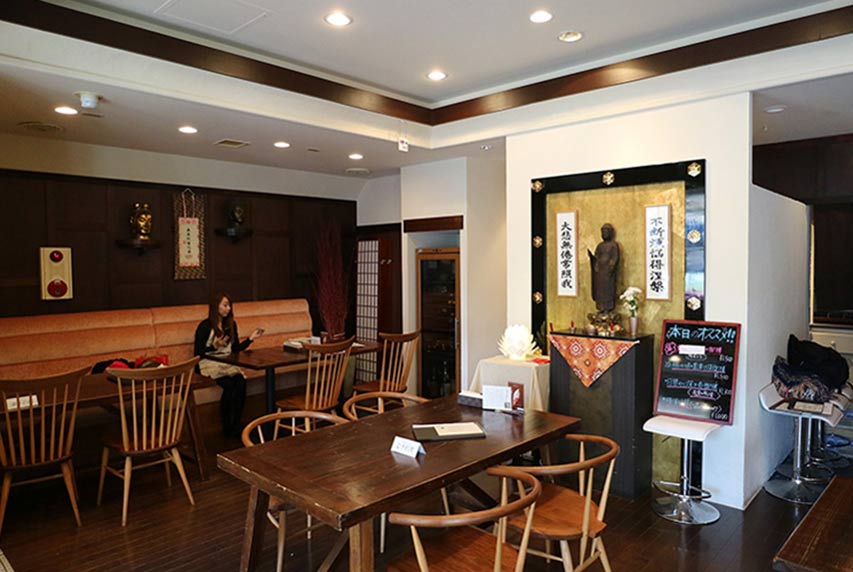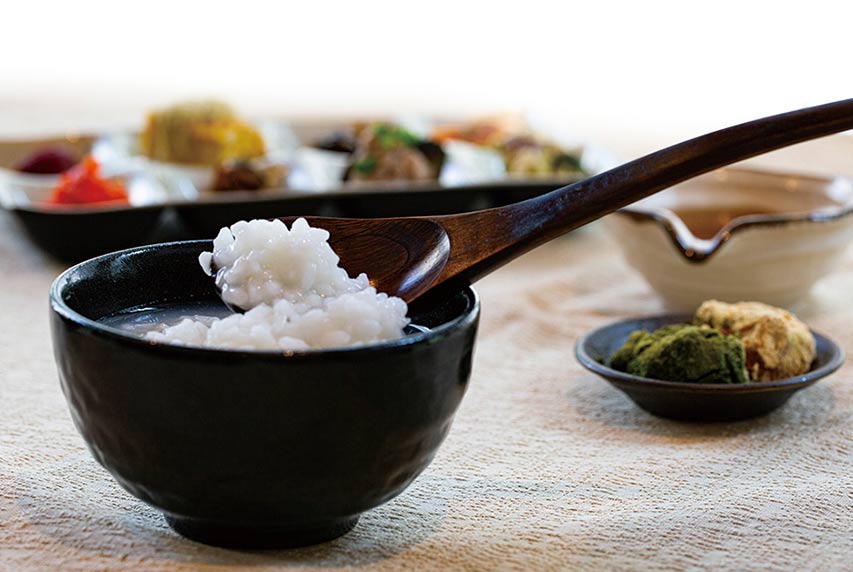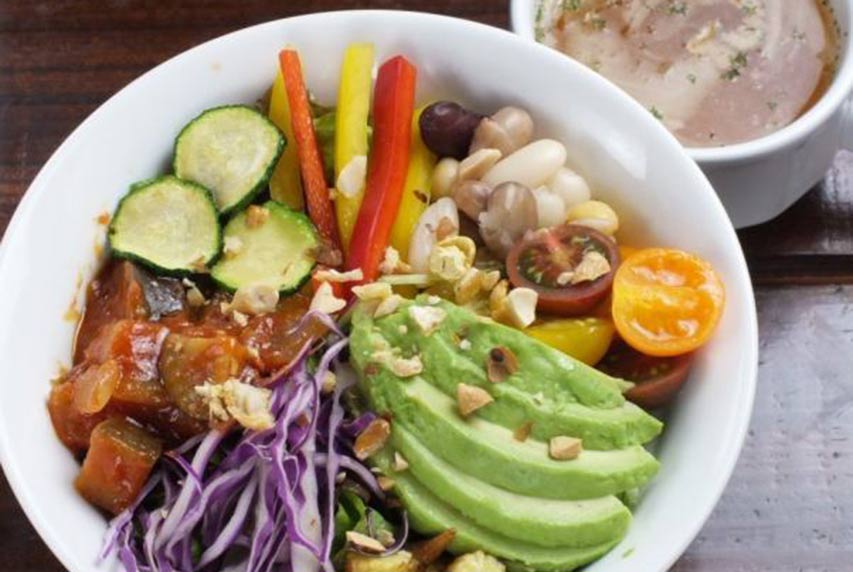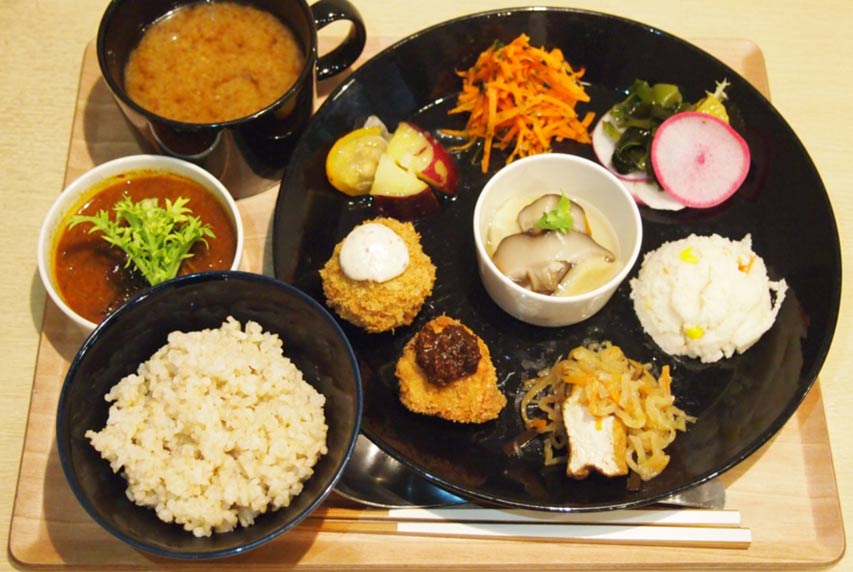
- Share this page
Share this page
- EN
Select Language
- FAVORITES
- Search
Detailed search: You can do a detailed search by keyword, genre, time, area and tag.
Main content starts here.
- Visit Tokyo |
- EXPERIENCES |
- Stories & Guides |
- Shojin Ryori (Buddhist Vegetarian Cuisine)
Updated: September 30, 2020
Shojin Ryori (Buddhist Vegetarian Cuisine)
A healthy style of cooking
"Shojin ryori" refers to traditional Buddhist cooking. It's made without meat or fish, and instead focuses on seasonal vegetables and mountain plants. Strong flavors such as garlic and onion are also avoided. Shojin ryori is fully vegetarian, and in fact, frequently uses no animal products at all, making it suitable for vegans, too.
This style of food has been eaten for centuries by Buddhist priests, but in recent years its popularity has been on the rise among the general public. People all around the world have taken an interest in this cuisine, both for its health benefits and the taste. Shojin ryori takes natural ingredients and shows them off at their absolute best.
A single meal is made up of multiple small dishes, and preparing them takes a lot of skill. The food should be colorful, with all five tastes represented: sweet, sour, salty, bitter, and umami. The ingredients should also complement the season. For example, cooling cucumber is used in the summer, and comforting root vegetables are used in the winter. Shojin ryori is beautiful to look at—as much a work of art as it is a meal. It's also fun to eat, and very good for you.
When people think of shojin ryori, they imagine sitting in a Buddhist temple. And while there are many temples serving this kind of cuisine, there are also plenty of restaurants serving it in Tokyo's urban centers. So if you want a healthy meal, or you're just curious, head to one of the places below and try it out.
Tips
- With shojin ryori, the experience is as important as the taste.
- Tera Cafe holds events where you can make prayer beads or copy out Buddhist sutras.
- Try Komaki Shokudo's "Enlightenment Parfait," made using dairy-free sesame ice cream.
- Kashiwatei is hidden in a quiet corner of Chofu. Make sure to take a map!
Tera Cafe, Daikanyama
The nature of Tera Cafe, Daikanyama can be determined by translating its name: "tera" means "temple" in Japanese. The decorations include sculptures and paintings, and you can meet a real Buddhist priest.
The food is cooked using plenty of hand-selected, seasonal vegetables. The Buddha Bowl is piled high with colorful ingredients, including protein-rich nuts. Elsewhere on the menu, you can try food pickled in a byproduct of the sake-making process, or a dish that mixes teriyaki with maple syrup. Bear in mind that not all items qualify as shojin ryori—there are nutritious meat and fish options, too.
Tera Cafe can be found in the upscale, stylish neighborhood of Daikanyama, just a two-minute walk from the station. It's at street level on Komazawa-dori and has a glass exterior, making it feel friendly and approachable. At night, the cafe uses soft lighting, creating a gentle, introspective atmosphere.



Komaki Shokudo Kamakura Fushikian, Akihabara
Komaki Shokudo Kamakura Fushikian, a restaurant that's popular with guests from around the world, serves only shojin ryori. All meals come with miso soup, and either white rice with mixed grains or brown rice (an additional fee is charged for brown rice). If you want to try a small amount of all available side dishes, try the "Kofuku Teishoku" set! It offers a great experience of Japan's organic vegetables, as well as traditional fermented foods and dried items. The drinks menu includes amazake (a sweet drink made with fermented rice), and a matcha latte with brown sugar syrup and soymilk. Beer and sake are available too. The restaurant operates a delivery service, so you can enjoy healthy food without leaving your front door. Call for more information.

Kashiwatei, Chofu
Kashiwatei is a shojin ryori restaurant in a residential area of Chofu, a city in western Tokyo. It's not far from the famous temple Jindaiji, which is the second-oldest temple in the metropolis after Asakusa's Sensoji.
The restaurant is set in a refurbished Japanese-style house, which gives it a very calm and laid-back atmosphere. The menu is based around vegetables and tofu. The dishes aren't overloaded with seasoning. Instead, the goal is to highlight the inherent flavor of each ingredient. The soba is particularly recommended—it's made entirely by hand.
If you have time before or after your meal, take a stroll around the nearby Jindai Botanical Gardens, a gigantic, colorful, and immaculately maintained facility. It's home to the biggest rose garden in Tokyo.